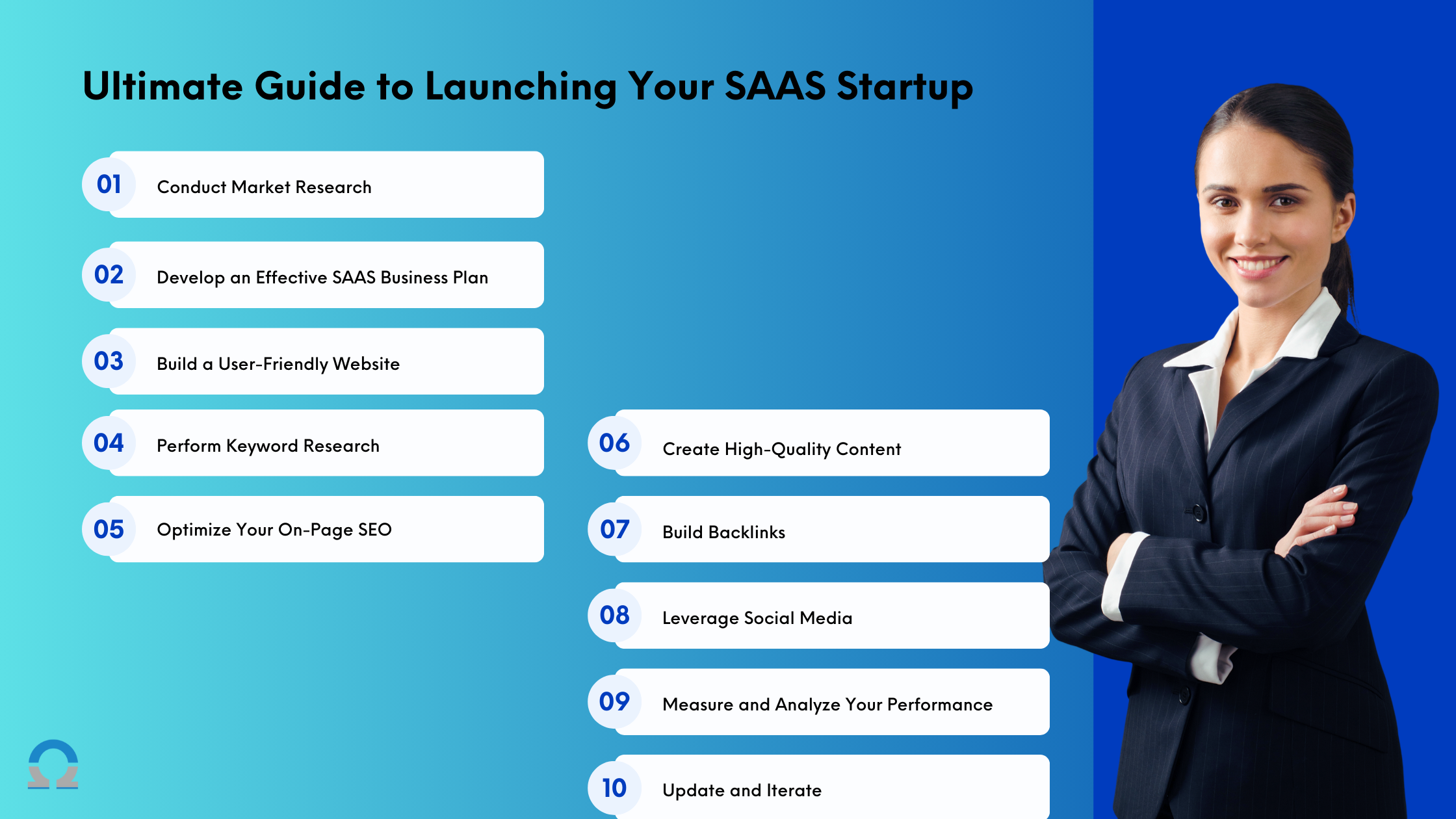Blog categories
The Ultimate Guide to Launching Your SAAS Startup
Introduction:
Launching a successful Software as a Service (SAAS) startup requires careful planning, targeted marketing strategies, and a deep understanding of search engine optimization (SEO) techniques. In this comprehensive guide, we will walk you through the step-by-step process of launching your SAAS startup and optimizing it for search engines. Follow these strategies to attract organic traffic, boost your online visibility, and get your SAAS startup off to a strong start.
Table of Contents:
1. Conduct Market Research
2. Develop an Effective SAAS Business Plan
3. Build a User-Friendly Website
4. Perform Keyword Research
5. Optimize Your On-Page SEO
6. Create High-Quality Content
7. Build Backlinks
8. Leverage Social Media
9. Measure and Analyze Your Performance
10. Update and Iterate
Conclusion

Step 1: Conduct Market Research
Before launching your SAAS startup, it's crucial to understand your target market and competitors. Conduct market research to identify your target audience, their needs and pain points, as well as the demand for your product. Analyze your competitors to find gaps in the market that your SAAS startup can fill.
Step 2: Develop an Effective SAAS Business Plan
Create a comprehensive business plan that outlines your SAAS startup's vision, target market, revenue model, pricing strategy, and marketing plan. Include specific goals and milestones to help you track your progress over time.
Step 3: Build a User-Friendly Website
Design and develop a visually appealing and user-friendly website for your SAAS startup. Ensure that your website is optimized for mobile devices and has fast loading speeds. Incorporate clear and intuitive navigation to enhance the user experience.
Step 4: Perform Keyword Research
Identify relevant keywords and search terms that your target audience uses to search for SAAS solutions. Use keyword research tools to find high volume and low competition keywords to target in your SEO strategy.
Step 5: Optimize Your On-Page SEO
Implement on-page SEO techniques to optimize your website's content. Include your target keywords in your website's meta tags, page titles, headings, image alt tags, and URL structures. Ensure your content is unique, informative, and relevant to your target audience.
Step 6: Create High-Quality Content
Produce high-quality, informative, and engaging content to attract and engage your target audience. Create blog posts, whitepapers, case studies, and how-to guides that address their pain points and provide valuable insights. Optimize your content with relevant keywords to enhance its visibility in search engine results.
Step 7: Build Backlinks
Develop a robust backlink strategy to improve your website's authority and visibility. Reach out to industry influencers, bloggers, and relevant websites, and establish partnerships for guest posting and link-building opportunities. Focus on acquiring quality backlinks from authoritative sources rather than quantity.
Step 8: Leverage Social Media
Utilize social media platforms to build brand awareness, engage with your target audience, and drive traffic to your website. Create compelling social media profiles and regularly share your content, engage in conversations, and solicit feedback from your audience.
Step 9: Measure and Analyze Your Performance
Regularly monitor and measure your SEO efforts using analytical tools such as Google Analytics. Track key performance indicators like organic traffic, keyword rankings, bounce rates, and conversion rates. Analyze the data to identify strengths, weaknesses, and areas for improvement.
Step 10: Update and Iterate
Continuously update and optimize your SEO strategy based on the insights gained from performance analysis. Stay updated with the latest SEO trends, algorithm changes, and industry best practices. Regularly update your website's content and keep an eye on your competition to stay ahead in the SAAS market.
Conclusion:
Launching a SAAS startup requires a strong foundational plan
and an effective search engine optimization strategy. By
conducting thorough market research, creating a
user-friendly website, optimizing content, building
backlinks, leveraging social media, and monitoring
performance, you can maximize your startup's visibility,
attract organic traffic, and drive success. Stay agile,
adapt to changes, and continuously improve your SEO efforts
to establish your SAAS startup as a leader in the industry.
For more details contact us at
sales@infoscience.co
or whatsapp at
+1 313 462 0002
- SAAS startup
- SEO
- market research
- business plan
- website optimization
- content creation
- backlink building
- social media
- performance analysis
- iterative approach